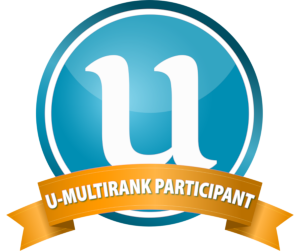Basics of Sports Biomechanics (LSPA_413)
About Study Course
Objective
The purpose of the study course is to provide students with competence on human health, the importance of physical activities and sports in promoting and strengthening health: - the structure and functions of the human biomechanical movement system, the mechanical and biological foundations of movements, the kinematics, dynamics and energetics of movements, - the development of physical characteristics and the management of movements biomechanical aspects.
Learning outcomes
1.In the study course, students acquire knowledge about: 1. The structure and functions of biomechanical systems 2. Human motor activity as a physical and biological process 3. Motor activity as a movement system, systemic structural approach in the analysis of movements 4. Classical mechanics adapted to the analysis of human movements 5. Motor to the biomechanical aspects of the process of creation and management of actions 6. Didactic principles of learning motor actions 7. Biomechanical methods of assessing the level of learning motor actions 8. Mechanical properties of biological tissues and materials 9. Biomechanical models of muscles, biodynamics of muscle contraction 10. Mechanical conditions of muscle action 11. Biomechanical aspects of movements methods of obtaining and analyzing indicators 12. Kinematics, dynamics and energetics of human movements 13. Methods of evaluating and improving human physical characteristics 14. Causes of injuries and preventive measures in sports training 15. Individual and group specificities of sports technical skills 16. Posture assessment methods and preventive measures 17 Locomotion, movement mechanics and biomechanics 18. Dependence of human motility on body structure indicators 19. Role of anatomical and physiological maturation in human motility ontogenesis.
1.20. To perform mechanical and biomechanical analysis of human movements, physical exercises 21. To choose physical exercises to improve human physical fitness or to ensure health, justify this choice 22. To justify the conditions for performing physical exercises depending on the person's age, gender, level of physical fitness 23. To evaluate physical exercise impact on the human body and its functions, muscle system 24. Choose physical exercises and justify this choice, for developing the strength properties of different muscle groups 25. Assess the injury risk of physical exercises, explain the causes of injuries and preventive measures 26. Assess the level of physical fitness of a person, justify the use of exercises characteristics of people of different age, gender and training 27. Assess human posture, take measures to improve static and dynamic posture 28. Assess human balancing abilities, take measures to improve balance.
1.29. Understand and explain mechanical and biological processes in living systems 30. Perform mechanical and biomechanical analysis of movements 31. Determine the effect of physical exercises on the support movement system 32. Knowing the mechanical and biomechanical properties of biological materials and tissues, be able to assess the injury risk of physical exercises 33. Justify the physical the biomechanical conditions of choosing and performing exercises, taking into account the characteristics of human age, gender and physical fitness 34. Assessing muscle contraction modes while performing physical exercises of various types 35. Explaining and discussing the issues of movement management, assessing the age of human movements, individualizing the choice of physical exercises 36. Knowing the general principles of human motor skills, one is able to match the choice of physical exercises with the critical periods of motor development 37. To justify the choice of physical exercises and the conditions of performance for the improvement of strength, speed, endurance, etc., physical characteristics 38. To connect the learned theory with movement analysis, human physical development and health disorders prevention practices 39. Analytical evaluate issues related to human age, gender, health, physical fitness and movement execution technique, discuss them based on sports biomechanics knowledge 40. Use learned theory and skills when solving professional issues related to sports.



